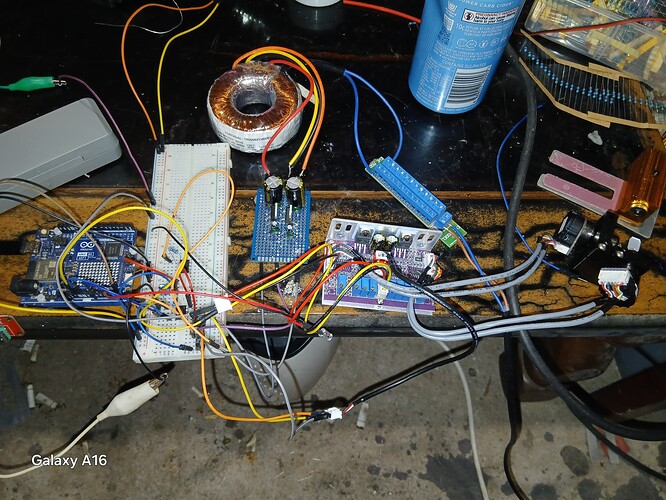Hi all I’m new here. I’m looking for either the best op amp and DAC or a breakout board that will do this -
Convert a variable pwm 0 to 5v input to analog output then convert the 0-5v analog signal to variable ±-10v output. I know how to set up a non inverting op amp with feedback, ref voltage and rc filters, I just need the BEST op amp to work with and looking through hundreds of data sheets shouldn’t be necessary when we have forums designed to eliminate that labourious need. I have no experience with digital to analog converters though so any help there would be much appreciated. I’m using the DAC pin of R4 wifi atm but I need 2 analog signals so DAC ic chips seem the way to go.
A breakout board would be better and easier, so if anyone knows if theres a built to suit board out there please share the link!
Whoops! This isn’t a guide, how do I move it to “Help needed” or ither such forum?
Hi Robert
Sorry for my ignorance but just what is that rat’s nest of wires supposed to represent. Some sort of interim schematic or block diagram might be more help.
You do realise that to finish up with +/- 10V you are going to need a split power supply of about +/- 12V do you not.
Cheers Bob
1 Like
This module
Adafruit MCP4728 Quad DAC with EEPROM - STEMMA QT / Qwiic | Buy in Australia | ADA4470 | Core Electronics
will give you multiple DAC channels in one device. It also provides an internal reference, which is pretty much required for MCU projects where a reference voltage is not easy to provide. You likely won’t find a DAC module to provide 5V because a DAC will not generate an output that is greater than its supply voltage (or its reference voltage) but as you are ultimately looking to convert the output to get +/-10V then I can’t see that the DAC output voltage range actually matters.
A PWM input would not be ‘0 to 5v’. It will be a 5V pulse input with a specific pulse rate and PWM pulse timing that will vary over a particular range. The pulse rate and PWM timing will depend on the source of the signal.
There is no need to hunt through hundreds of op amp spec sheets for the best. Once you have decided on the specifications you require for the device you can use the manufacturer’s selection tables to find the most suitable.
1 Like

